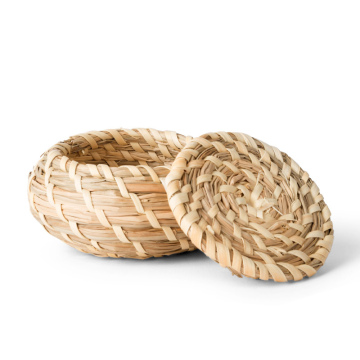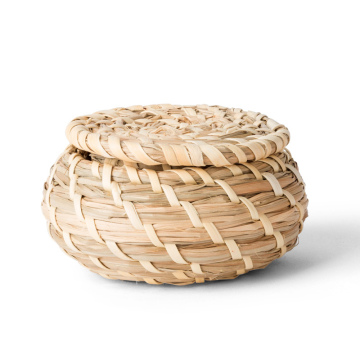Savoring Japan: A Yakitori Culinary Adventure
Introduction to Yakitori
Yakitori, a traditional Japanese dish, consists of skewered and grilled chicken, showcasing not just the culinary skills of its makers but also the rich heritage of Japan’s food culture. Originating in the Edo period, yakitori began as a simple street food, gaining immense popularity as people sought quick and satisfying meals. Over the years, it has evolved into a beloved staple in izakayas (Japanese pubs) and specialized yakitori restaurants across the country.
The preparation of yakitori is as much an art as it is in cooking, involving specific techniques to enhance the flavors of the chicken. Chefs typically use binchotan charcoals to grill the skewers, infusing the meat with a unique smoky aroma while achieving an ideal char on the outside while keeping the inside tender and juicy. This meticulous grilling method not only accentuates the flavor but also reflects a deep respect for the ingredients used, as each component is strategically chosen.
Yakitori primarily uses various cuts of chicken, each offering a distinct taste and texture. Commonly grilled parts include the tender breast meat, juicy thigh, and flavorful wings, among others. In addition to chicken, chefs often incorporate seasonal ingredients, enhancing their offerings with vegetables such as scallions and shishito peppers. The flexibility in ingredients and preparation methods ensures that there’s something for everyone, catering to diverse palates and preferences.
Beyond its taste, yakitori serves as a social experience, often enjoyed with friends or family over drinks. The camaraderie found in sharing these skewers fosters connections, making it more than just a meal, but a cherished part of Japanese culture. Overall, yakitori embodies the Japanese philosophy of simplicity and balance while delivering an unmatched culinary adventure.
Exploring the Yakitori Varieties
Yakitori, a beloved staple of Japanese cuisine, showcases an impressive variety of flavors and textures that cater to diverse palates. At its core, yakitori consists of skewered grilled chicken, which can be prepared using different parts of the bird, each offering a unique taste experience. The most common chicken parts used include thigh, breast, liver, and skin. These cuts are prepared in distinctive ways, elevating the dish from a simple skewer to a culinary masterpiece.
The seasoning plays a crucial role in defining each yakitori variant, with the two most predominant styles being tare and shio. Tare, a sweet soy sauce-based glaze, is often brushed onto the skewers during grilling, imparting a rich umami flavor that complements the natural juiciness of the chicken. This preparation is particularly popular among those who enjoy a hint of sweetness in their savory dishes. On the other hand, shio, which translates to salt, offers a minimalist approach, accentuating the inherent flavors of the ingredients without overpowering them. This style is favored by purists who appreciate the simplicity of well-cooked chicken.
Beyond the typical chicken parts, yakitori also encompasses an array of specialty items such as grilled vegetables and offal. Skewers featuring seasonal vegetables, such as bell peppers, zucchini, and mushrooms, provide a delightful counterbalance to the rich flavors of the meat. Furthermore, offal cuts like heart, gizzard, and liver can be grilled to perfection, providing adventurous diners with bold, intricate flavors that are often celebrated in traditional yakitori establishments.
The world of yakitori is vast and varied, inviting enthusiasts to explore its numerous options. From novice eaters to seasoned connoisseurs, there is a yakitori delight to suit each individual's taste, making it a culinary adventure worth savoring in Japan.
The Yakitori Experience: Where to Enjoy It
Yakitori, the renowned Japanese grilled chicken skewers, has carved a special niche in culinary culture, deeply embedded within both local cuisines and dining experiences. To truly appreciate this delightful dish, one must explore the best venues across Japan, ranging from cozy izakayas to specialized yakitori restaurants. The ambiance in these establishments significantly enhances the dining experience, often adorned with traditional decor that reflects Japan's rich heritage.
In local izakayas, diners can enjoy a relaxed atmosphere, where yakitori is prepared right before their eyes. These casual eateries typically feature an open grill, allowing the fragrance of grilled meat to fill the air, enticing guests to indulge in a variety of skewered options. Skilled chefs showcase their mastery over the grill, employing techniques such as direct flame cooking that ensures an exquisite charred exterior while retaining the juiciness of the meat. Each region in Japan offers its unique take on yakitori, from the seasonings to the choice of ingredients, making it a true culinary adventure.
For those seeking a deeper dive into yakitori culture, specialized yakitori restaurants provide a more formal setting. Here, chefs often focus on specific chicken parts, including rare cuts like liver or gizzards, prepared with meticulous attention to detail. The social aspect of yakitori dining cannot be overlooked; sharing skewers with friends or family enhances the experience, fostering conversation and camaraderie. When dining out, it is customary to order a selection of skewers complemented by beverages such as sake or beer, as these pairings elevate the flavors of the dish.
To make the most of the yakitori culinary experience, diners should embrace the casual etiquette, which includes savoring each skewer slowly and expressing appreciation for the meal. Whether in a bustling izakaya or a sophisticated yakitori restaurant, each bite offers a delightful glimpse into Japan's culinary artistry.
Recreating Yakitori at Home
Bringing the delightful culinary experience of yakitori to your home kitchen is both rewarding and achievable. To start, it's essential to gather the right ingredients, which form the basis of authentic yakitori. The star of this dish is, of course, the chicken. Certain parts of the bird are preferred for their unique textures and flavors, including thigh, breast, and even organ meats like liver. Additionally, utilize vegetables such as green onions, bell peppers, and shiitake mushrooms to create vibrant skewers that complement the meat.
When it comes to cooking, the two primary methods for preparing yakitori are grilling and broiling. Grilling outdoors on a charcoal grill imparts a distinct smoky flavor that is characteristic of traditional yakitori. If outdoor grilling isn't an option, broiling in an oven can also yield satisfying results. Whichever method you choose, ensure your grill or broiler is preheated to achieve crisp, caramelized exteriors on your skewers.
Flavor in yakitori often comes from a marinade known as tare, which typically consists of soy sauce, mirin, and sake. This mixture can be simmered to create a sticky glaze that you brush onto the skewers while cooking. For those who prefer a simpler approach, a sprinkle of salt can enhance the natural flavors of the ingredients without overshadowing them. Additionally, marinating the chicken before cooking can infuse it with moisture and flavor, further enriching the final taste.
For the best results, consider investing in bamboo skewers or metal ones, both of which are suitable for yakitori preparation. Always soak bamboo skewers in water for about 30 minutes to prevent them from burning. To facilitate your culinary journey, numerous accessible recipes online can guide you in crafting various types of yakitori, from the classic salt-seasoned styles to the delectable tare-glazed options. By following these tips, you will be well on your way to recreating the essence of yakitori in the comfort of your home.











